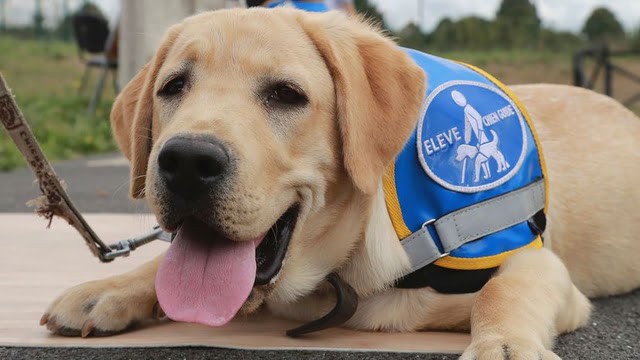Quck answer
Guide dogs are specially trained dogs that help people with visual impairments to navigate their surroundings. These dogs are trained to guide their handlers around obstacles and alert them to potential hazards. Guide dogs are usually trained to stop at curbs, stairs, and other obstacles, and to avoid low-hanging branches and other hazards. They are also trained to be calm and obedient in public places, and to ignore distractions such as other animals or food. Guide dogs are an important tool for people with visual impairments, allowing them to navigate their surroundings safely and independently.
Animal Facts

Guide dogs are trained to assist visually impaired individuals in navigating complex environments. These intelligent animals provide an incredibly valuable service, and are capable of much more than many people realize.
While most dogs are happy to simply be a companion, guide dogs spend much of their lives performing demanding tasks. Their work involves helping their owners travel safely from place to place, and they do it with remarkable skill and dedication.
This article will explore the life of a guide dog – their duties, training process, and what happens to them when they retire. Additionally, we’ll discuss ways in which we can all support these amazing animals in their important work, and how individuals can get involved in raising guide dogs.
FAQ
1. What are guide dogs?
Guide dogs are highly trained dogs that assist people who are blind or visually impaired with navigating their surroundings safely. These dogs are trained to guide their handlers around obstacles, stop at curbs and stairs, and lead them to their desired destinations.
2. How are guide dogs trained?
Guide dogs are trained through a rigorous process that starts when they are puppies. They are trained to respond to verbal and physical cues, navigate different environments, and recognize obstacles and hazards. The training process can take up to two years and includes socialization, obedience training, and specialized instruction for guiding their handlers.
3. What breeds are used as guide dogs?
Labrador Retrievers, Golden Retrievers, and German Shepherds are the most commonly used breeds for guide dogs due to their intelligence, trainability, and temperament. However, other breeds such as Standard Poodles and Boxers can also make excellent guide dogs.
4. How do guide dogs communicate with their handlers?
Guide dogs communicate with their handlers through a series of physical cues, such as stopping or turning. They also use their bodies to indicate obstacles or hazards, such as curbs or low-hanging branches. Additionally, handlers give verbal commands to their guide dogs, such as “forward” or “left.”
5. What is the role of the guide dog handler?
The guide dog handler is responsible for providing care and guidance to their guide dog. They must ensure that the dog is properly fed, groomed, and exercised. Handlers must also be able to read their dog’s physical cues and give clear verbal commands. Additionally, they are responsible for navigating their surroundings using their guide dog’s assistance.
6. Can guide dogs be trained to assist with other disabilities?
Yes, guide dogs can also be trained to assist people with other disabilities, such as hearing loss or mobility impairments. These dogs can be trained to alert their handlers to sounds such as doorbells or alarms, or to provide support and balance for people with mobility impairments.
7. How can I support guide dog organizations?
You can support guide dog organizations by volunteering your time or donating money. Many guide dog organizations rely on volunteers to help with tasks such as socializing puppies or fundraising. Additionally, donations can help cover the costs of training and caring for guide dogs, as well as supporting their handlers.





Leave a Reply